5
Road Safety
Car seats, child pedestrians, cycling, scootering, skateboarding and driveway accidents

10
Fire Safety
Burns, what to do if there’s a fire. Ways to reduce the risk of a fire occurring and smoke alarms
14
Internet Safety
Cyberbullying, how kids can keep safe online and how parents can help kids stay safe online
24
Water Safety
Swimming pools, the sea, lifejackets, boating and kayaking
4
WEST AUCKLAND
pullout of fun & exciting activities NEW ZEALAND’S TRUSTED FAMILY SAFETY RESOURCE Issue #5 | West Auckland SCAN QR CODE FOR HANDSFREE READING
page














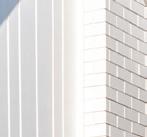


















• Carpet Installation
• Concrete Sealing
• Floor Prep
• Concrete Grinding
• Flooring Uplift & Removal
• Free Quotes
• Carpet & Vinyl Supply
• Carpet Binding & Overlocking
• Cork Flooring
• BCITO Flooring Qualified
Phone: (020) 4119 7099
Email : len.scott@outlook.com

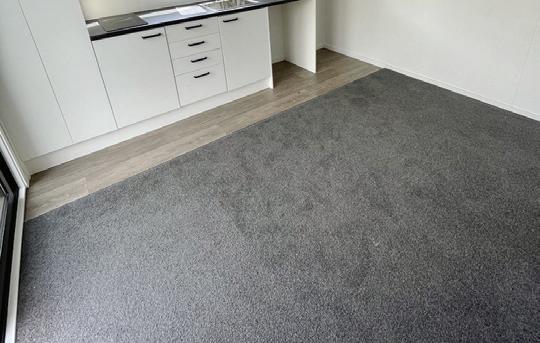


0800 020 600 80 Main Road, Kumeu signature.co.nz Your local builder Thinking of building? Let our in-house team of experts bring your vision to life. Choose Signature Homes West & North-West Auckland today for a stress-free new home journey. Tel: 09 6222 333 Email: info@crownselfstorage.co.nz 249 Neilson St, Onehunga, Auckland www.crownselfstorage.co.nz Looking for affordable storage in Auckland?
Car Storage
Boat and RV Storage
Domestic Storage
Commercial Storage Affordable Auckland Storage Facilities
•
•
•
•
• Vinyl Installation
• Vinyl Planks
CARPET | VINYL | DOMESTIC | COMMERCIAL


Road Safety
Car seats, child pedestrians, cycling, scootering, skateboarding and driveway accidents.
Home Safety
Poisonings, cuts and button batteries.

Playground Safety
How to be safe in the playground and stranger danger.
Water Safety





























Fire Safety
Burns, what to do if there’s a fire, ways to reduce the risk of a fire occurring, and smoke alarms.
Internet Safety
Cyberbullying, how kids can keep safe online and what parents can do to help.
How to be safe in pools, rivers and in the sea. All about about lifejackets, boating and kayaking.
Quad bike dangers and being vigilant in rural areas.
After consultation with both educators and parents, SafetyWise has been compiled as a comprehensive age-appropriate publication, designed for use in both the classroom and for children to take home and share with their parents/caregivers as a go-to resource.
The publication’s purpose is to reinforce key safety messages to children in a fun and engaging way, be the subject crossing a road, using the internet, swimming, cycling or being a passenger in a car.
Issue #5 - West Auckland | 3
5
9
10
24
22
14
Rural Safety
33 CONTENTS About us... 5 11 24 5 9 4 page pullout of fun & exciting activities Pages 17-20 COVER IMAGE - FLANSHAW ROAD SCHOOL STUDENTS CODE - S24WA Disclaimer This publication is provided on the basis that The Job Agency is not responsible for the results of any actions taken on the basis of information in these articles, nor for any error or omission from these articles and that the firm is not hereby engaged in rendering advice or services. The Job Agency expressly disclaim all and any liability and responsibility to any person in respect of anything and of the consequences of anything done, or omitted to be done, by any such a person in reliance, whether wholly or partially upon the whole or any part of the contents of this publication. Advertising feature articles are classified as advertising content and as such, information contained in them is subject to the Advertising Standards Authority Codes of Practice. Contents Copyright 2017 by The Job Agency. All rights reserved. No article or advertisement may be reproduced without written permission. Does your company have any exciting projects or products you would like to feature in an upcoming edition of Safetywise? PLEASE CONTACT OUR EDITORIAL/SALES TO DISCUSS: General Manager of Operations: Kylie Palermo PO Box 1879,Christchurch 8140 Ph:
961 5051 | Email:
Production: Jarred Shakespeare - Art Director Ph:
5088
Email:
Amber Mundy - Production Co-Ordinator Manager Ph:
5075 | Email: amber@markat.co.nz Kyla Nicholls - Production Co-Ordinator Jessica Ann - Designer Angela Elley, Sales Manager Safetywise Magazine Angela Elley
(03)
info@markat.co.nz
(03) 961
|
jarred@markat.co.nz
(03) 961
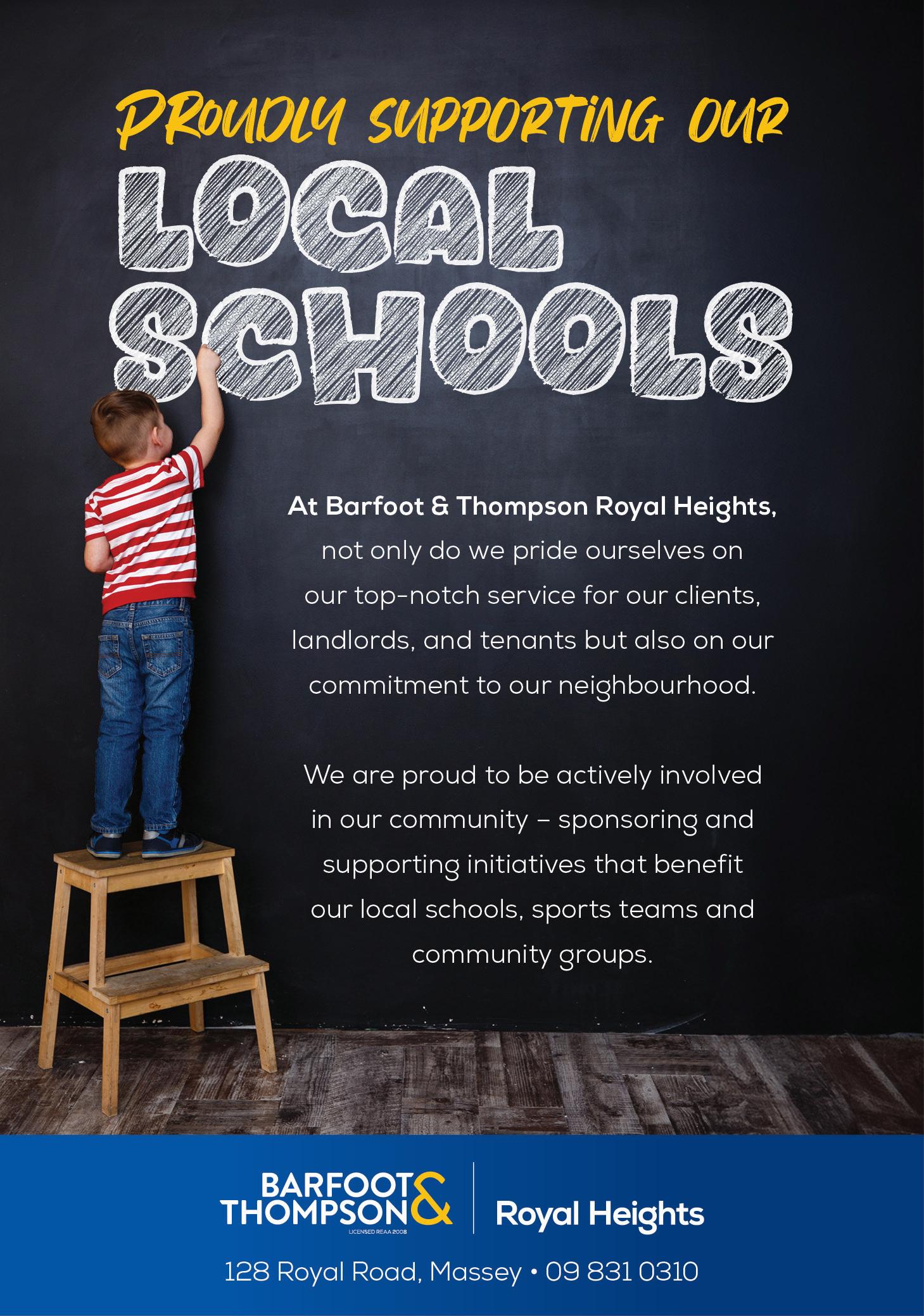



4 | Issue #5 - West Auckland
Swimming lessons for all ages & abilities from 3 months through to adults. Located in Albany, Hobsonville, Newmarket and One Tree Hill. Infants • Preschool • School Age • Adults Free Trial Swimming Lesson for all new customers Love the water? Learn to Swim with confidence
www.hiltonbrownswimming.co.nz
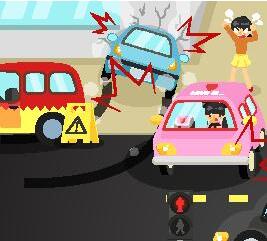
ROAD

Car seats:
It’s safer for kids to use a child restraint until they are 148cm tall.
For kids 0-14 years, one of the leading causes of injury involves children as passengers in motor vehicles, with about 18 fatalities a year and the equivalent of one classroom-full (26) of children admitted to hospital every month.
Studies show that child restraints can significantly reduce the risk of hospitalisation and critical injury when used correctly.
Car safety messages:
• Always use the correct child restraint an booster seat for your child’s height, weight and age
• Follow manufacturers’ instructions for sizing and installation of your child restraint
• Remember all child car seats being used in New Zealand must meet the accepted Safety Standards
• Make sure your child restraint or booster seat correctly fits your vehicle
• Get help installing your child restraint or booster Contact a NZTA-certified child restrain technician for support and to get help to correctly install a child restraint
• The back seat is safest for kids.
Child pedestrians:
More than 5,000 pedestrians are fatally injured on the world’s roads each week. Many of those killed are children walking to and from schools.
In New Zealand, child pedestrian injuries are a leading cause of traffic related child deaths.
How to cross the road safely:
• Heads up and devices down when crossing the road
• Watch out for sneaky driveways
• Use pedestrian crossings and controlled intersections
• Have a school travel plan, or join a ‘walking school bus’ when travelling to school.
Driveway accidents:
• Five children are fatally injured each year in NZ driveways
• Over 20 children a year, or one a fortnight, are admitted to Starship Hospital
Signs of a risky driveway:
• A long driveway
• A driveway in a quiet road or cul-de-sac
• A driveway that also provides pedestrian access to the house (no separate pedestrian pathway)
• A driveway leading to lots of parking – cars need to be moved around to make room or allow vehicles to leave
• No physical barrier (i.e. fence) between driveway and outdoor play area.
Cycling and bike helmets:
Always wear a helmet when cycling.
Cycling is an important form of exercise, transportation and recreation for children in New Zealand, and for many children, learning to ride a bicycle is an important part of their play and development.
However: cycling related injuries are one of the top ten causes of unintentional injury related fatalities for children in New Zealand.
Be Smart - plan safe cycle routes with an adult, the best riders are skilled riders
Be Safe – no helmet, no bike
Be Seen – wear bright colours and use reflective gear.
Learning to ride a bicycle is an important part of their play and development.
Learn the 2-4-1 rule on how to wear a helmet correctly:
2: The helmet should be no more than two fingers above your eyebrow
4: Adjust the straps under your ears. They should form two ‘Vs’
1: No more than one finger should fit under the chin strap.
• Most children injured are toddlers, aged two years.
• Walk around the car, and make sure children are in a safe place and supervised by an adult.



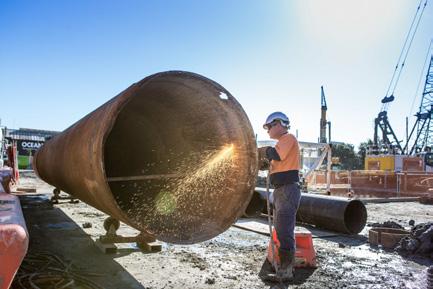

Issue #5 - West Auckland | 5
CHECK
FOR ME BEFORE YOU TURN THE KEY
HIGH QUALITY CLEANING SERVICES AT AFFORDABLE PRICES Bond Cleaning NZ is the company to call and get your bond back guaranteed! 022 043 7388 | info@bondclean.co.nz www.bondclean.co.nz
Scooters & skateboards - Be Safe2Scooter
Wearing a helmet on your scooter and skateboard can stop your brain getting badly hurt if you fall off.
So: follow the steps on how to wear your helmet correctly.
Kick scooters and skateboards provide children with a valuable form of exercise and transport. Learning to ride a skateboard or scooter can be an important part of play, risk taking and development.
The rise in popularity of, and subsequent exposure to, skateboarding and scooting has been coupled with a marked increase in skateboard and scooter related injuries, with over 140 children hospitalised with skateboard related injuries every year.
Over 30 children are hospitalised with scooter related injuries every year.
How to be safe on scooters and skateboards:
• Wear correctly fitted helmets that meet an approved safety standard
• Ride on the footpath, and watch out for sneaky driveways
• Give way to pedestrians
• Cross roads safely on foot, at pedestrian crossings
• Wear elbow and knee pads when scootering, and add wrist guards when skateboarding.
How a correctly fitted helmet should look:

Turn to page #19
To colour in your very own bike saftey picture (Dont forget to stick your picture on the fridge!)
1. Check that your ears sit in the middle of the V shape of the straps
2. Make sure that the front of the helmet sits two fingers width above your eyebrows
3. Check that when the chin strap is done up, that just one finger can fit between your chin and the strap.
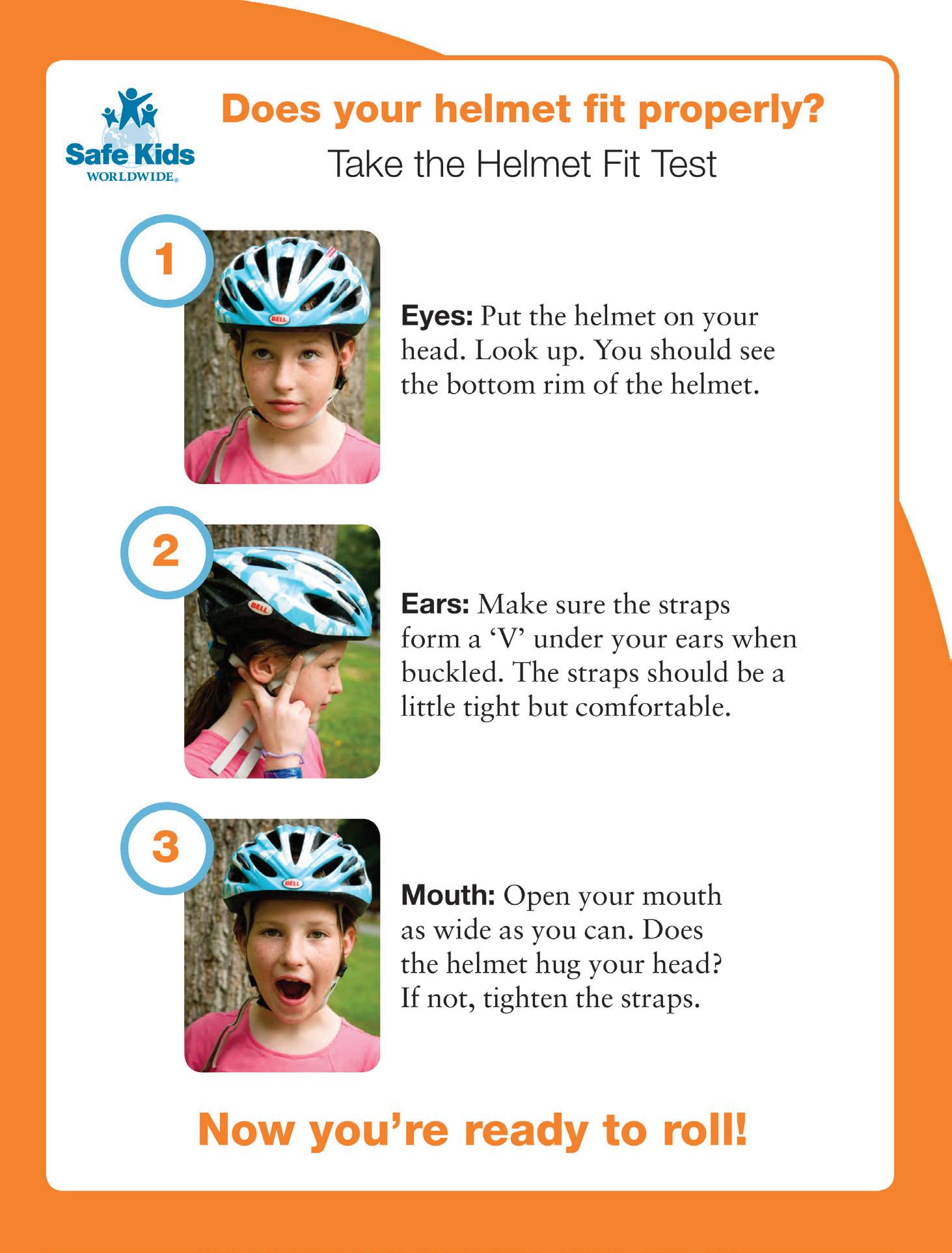
6 | Issue #5 - West Auckland
HOME SAFETY
Button Batteries
• Kids under six years old represent the greatest risk
• 20 children are taken to the Starship each year as a result of swallowing batteries
• It takes as little as two hours for a button battery to cause a severe burn injury in the oesophagus.
Prevention: Search, Secure and Share
Many coin-sized button batteries can appear “invisible” to parents because devices come with the batteries already installed.
To keep your children safe:
SEARCH: Your home, and any place your child goes, for gadgets that may contain button batteries
SECURE: Button battery-controlled devices out of sight and reach of children, and keep loose batteries locked away
SHARE: This life-saving information with caregivers, friends, family and whanau.
In an emergency: Get help fast
Keeping these batteries locked away and secured in devices is key, but if a coin-sized button battery is swallowed, you should follow these steps:
• Go to the nearest hospital emergency department immediately
• Tell doctors and nurses that it might be a coin-sized button battery. If possible, provide the medical team with the identification number found on the battery’s pack
• Do not let the child eat or drink until an X-ray can determine if a battery is present
• Do not induce vomiting.
Cutting & Piercings
Be sharp: Prevent cutting and piercing injuries in and around the home. Cutting and piercing injuries are a common cause of injury for children, with over 550 children hospitalised every year from a serious cut or puncture injury. This injury is the second leading cause of hospitalisation for five to nine year olds. $11.7M per year is the total in ACC payments to families for treatment of this injury.
Ways to keep your child safe at home
• Use safety glass in furniture, windows and doors
• Spot and remove sharp and pointed objects at home and in play areas.
Make your home a safety zone! Our homes are where injuries most commonly happen, and children under five year’s of age are particularly more at risk.
• Some 48 children are killed each year - and 231 are hospitalised every month
• Sixty percent of all injuries to under-fives happen IN THE HOME
• Fifty percent of these injuries are linked to structural issues in the home.
Poisoning



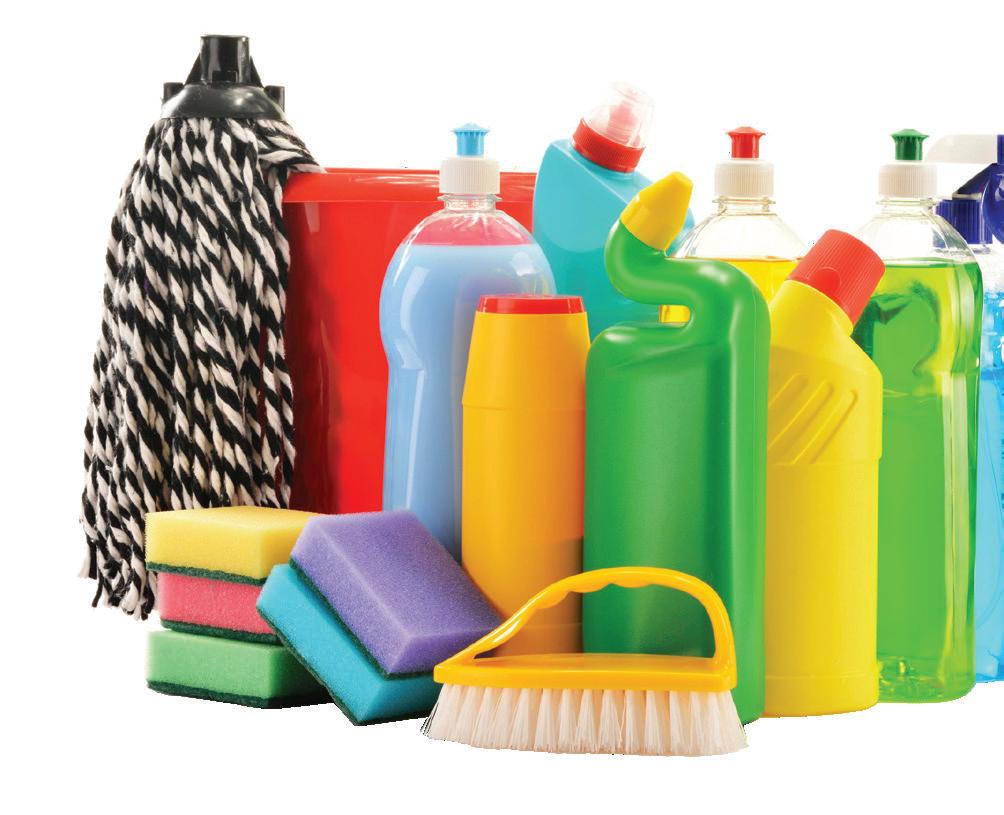















Poisoning is the third most common cause of injury-related hospital admissions for children aged zero to four years. Most of these injuries happen in the home.













Cleaner or chemical poisonings occurred most frequently in one and two year olds, and poisonings from drugs and medications are spread across the under five age group.
Over 300 children are admitted to hospital each year because of an unintentional poisoning. Some 83 percent of all children hospitalised are zero to four years old. And 81 percent of all childhood poisonings occur in the home.


Issue #5 - West Auckland | 7
• Digouts, Driveways & Floors • Footpaths, Landscape Features & Vehicle Crossings • Pool Surrounds & Patios • Excavation • Permeable concrete We provide concrete services for the Auckland area. With over 15 years experience in residential and commercial concrete. 021 046 4801 | www.concretecrew.co.nz Residential and commercial Lift and Access systems supplied, installed and serviced throughout New Zealand. cremerlifts.co.nz PHONE 0800 40 40 60

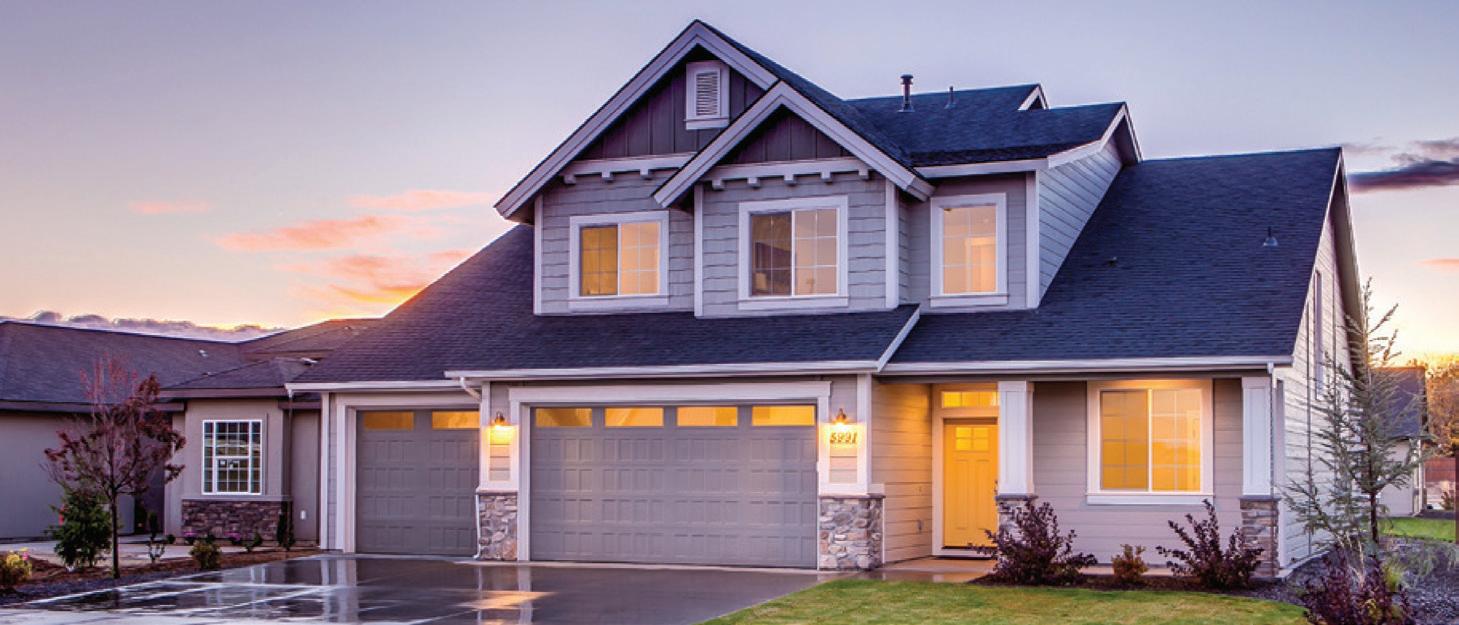

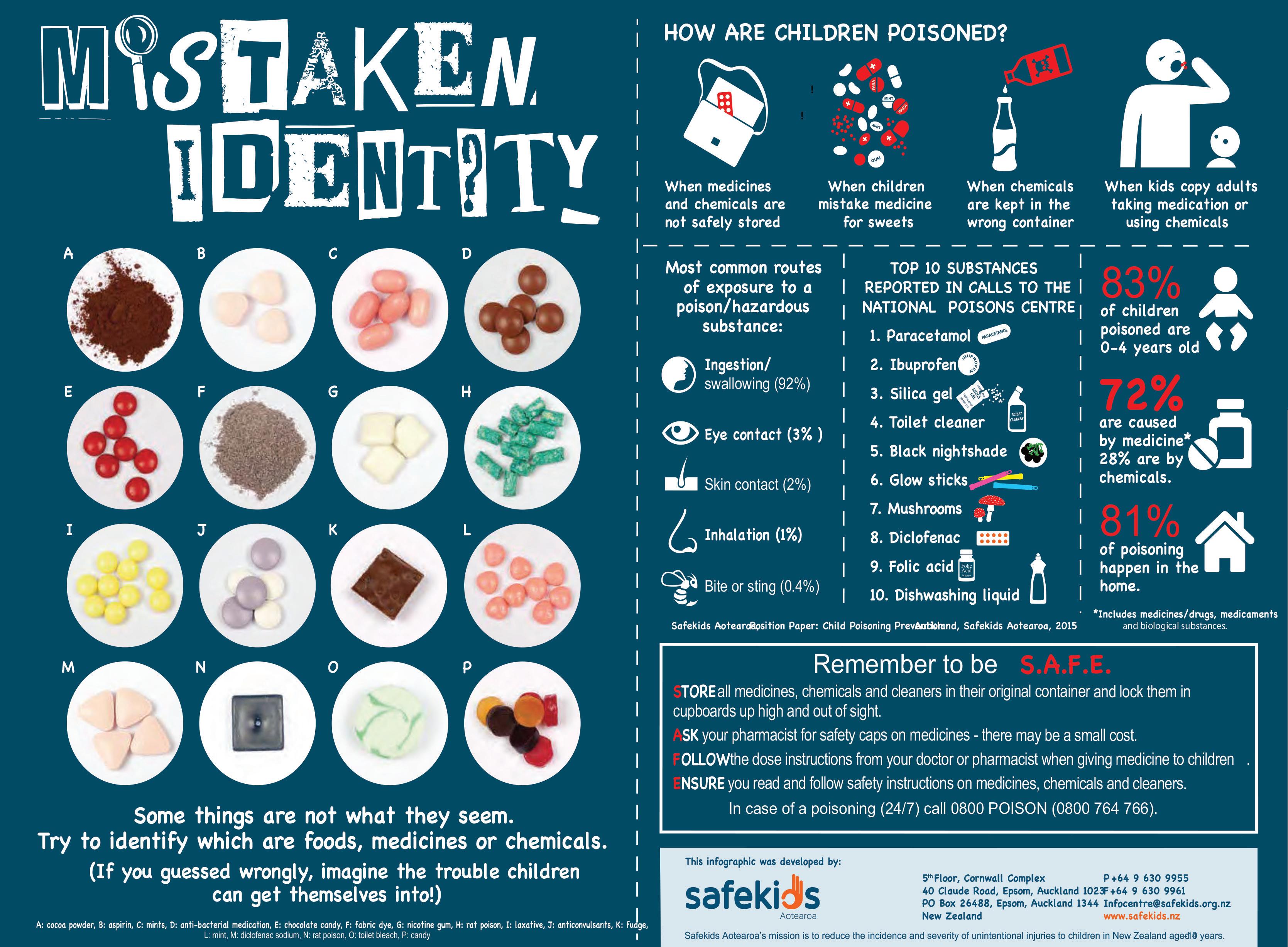
8 | Issue #5 - West Auckland Frank Real Estate Your real estate professional for all property types. Residential Properties | Land & House Packages Development Projects My services have been proven by Awards and Testimonials. If you are looking to sell or buy, feel free to contact me. Frank Liang www.frankrealestate.co.nz M: 021 780 100 DDI: 09 215 7959 E: f.liang@barfoot.co.nz Royal Heights P: 09 831 0310 128 Royal Rd, Royal Heights
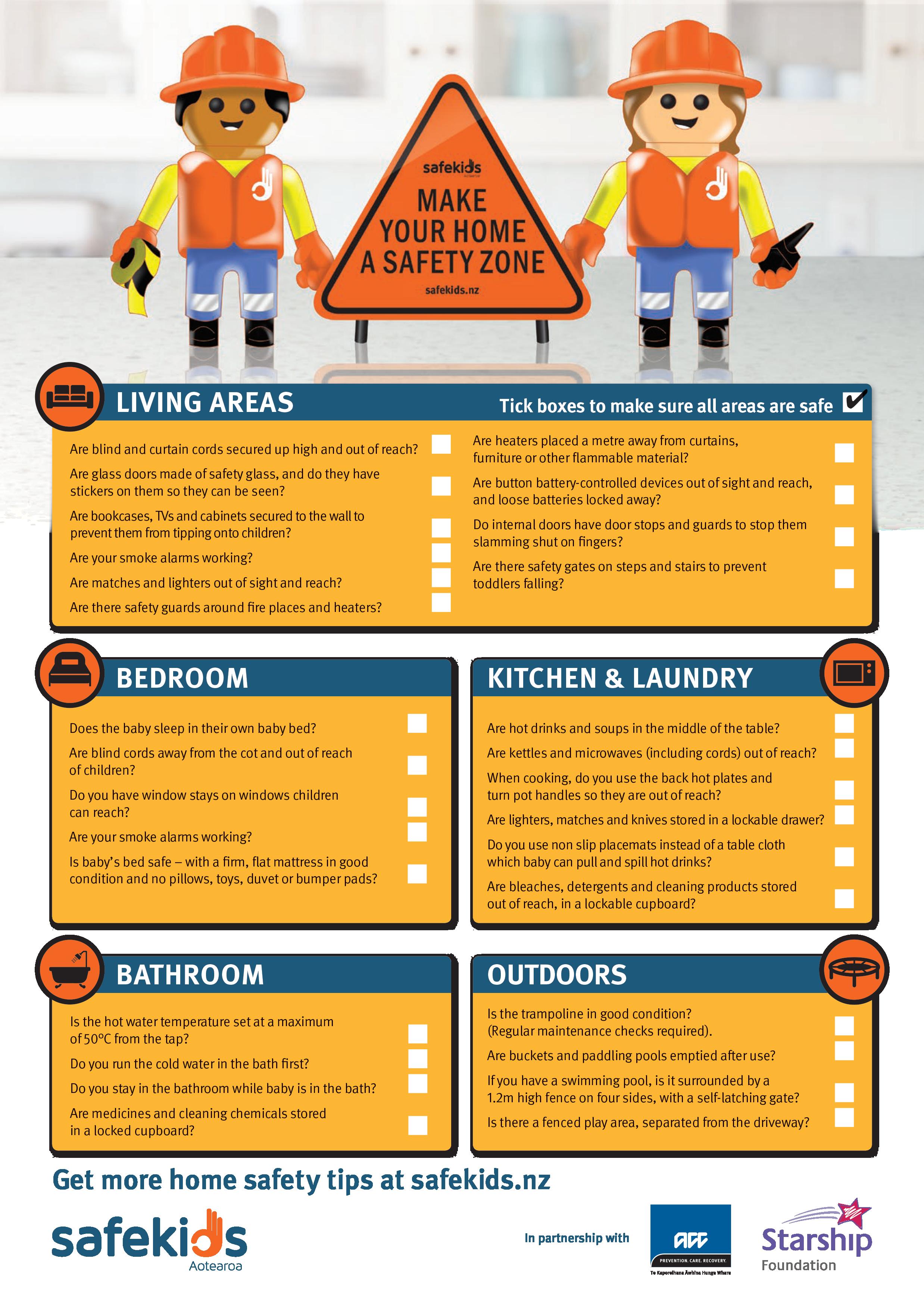
Issue #5 - West Auckland | 9



FIRE SAFETY
Burns
Always keep hot drinks out of the reach of children.
Burns are a leading cause of injury for young children. Of one to two year olds admitted to hospital due to severe burns, over half are caused by spilt hot drinks (tea and coffee) and other liquids. Burn injuries from fires occur less frequently, but are responsible for a higher number of fatalities than burns from hot substances.
Hot water burns & fire injuries in NZ
More than five children are burned severely enough to be admitted to hospital each week. Around five children die each year. More than half of one to two year old kids are hospitalised for hot water burns.
First Aid
• Run water from the cold tap gently over the burn for 20 minutes or until an ambulance arrives. For patients vulnerable to hypothermia (babies or elderly), luke warm water is OK
• Do not touch the burn or burst any blisters, as this can cause infection
• Once cooled, remove clothing from the burned area If clothing sticks, cut around the fabric
• Cover the burn with clean non-fluffy material (e.g. a sheet or loosely cover with plastic wrap) to prevent infection
• Do not cover the face
• Seek advice from your doctor or hospital
• In an emergency call 111.
Burns from hot substances
• Never consume hot drinks or soup while holding a child.
• During bath time, always run the cold water first.
• Set your hot water temperature to 50-55° Celsius at the tap.
Fire & Flame



Checking your smoke alarms
Your alarms will start to beep regularly if the battery is low. Replace smoke alarm batteries at least once a year.
The alarms will also need to be replaced after a while.
Once a month, check the battery by pressing the test button. Dust and debris can stop alarms from working properly, so clean/vacuum over and around your smoke alarms regularly.
Choosing your smoke alarm
Fire Safe NZ recommends you to install a long-life photoelectric smoke alarm in your home, as they provide up to 10 year’s smoke detection without having to replace batteries.
However, still regularly check they’re working correctly.


Clothing burns, so please make sure your kids are always a metre away from the heater.






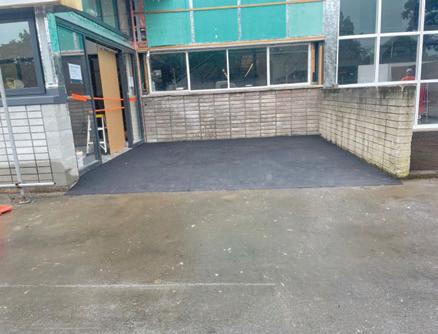
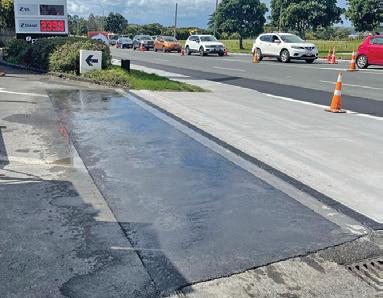

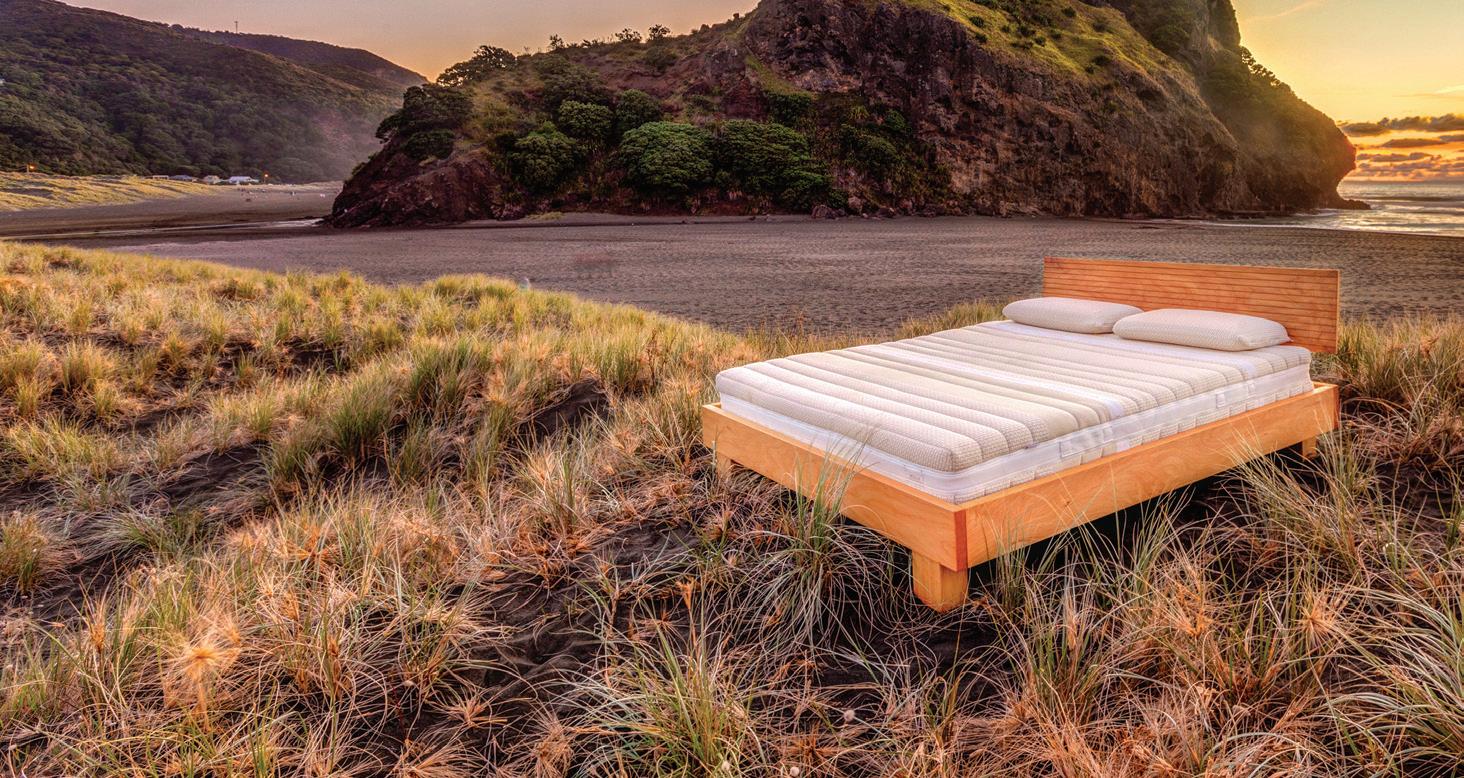

10 | Issue #5 - West Auckland
Information provided courtesy of Safekids Aotearoa. www.safekids.nz
Get your smoke alarms sorted in 3 simple steps: 1. Check 2. Choose 3. Install Installing smoke alarms Diagram of where you should install your smoke alarms. In your kitchen, bathroom or laundry, use a heat alarm instead. Working smoke alarms save lives! EXPEDITIOUS ASPHALT REPAIRS “ONE HUMAN COMPLETED ALL THESE JOBS” Contact me for more info 021 248 6478 asphaltontap@gmail.com Beautiful, healthy, and supremely comfortable beds made right here in the West. Futonz Natural Beds 631 West Coast Rd, Oratia (09) 813 0894 www.futonz.co.nz
Talking to your children about fire safety
It’s a good idea to talk to your children about fire safety, how to avoid starting fires, and what to do if there’s a fire in your home.
Children as young as five can learn what to do in a fire emergency. This is lifelong learning that they will take into adulthood. Children also need to understand that fire can be dangerous.
Talking about fire
When talking about fire, children might ask about risks associated with fire emergencies. You should provide truthful answers without making the child afraid.
You can tell your child about firefighters and how they rescue people in fires. However, because firefighters might not arrive in time, teach your child how to get out safely.
It’s so important to have smoke alarms and an escape plan to know what to do in a fire. Remember: Get out, stay out.
Talking about what to do in an emergency.
If a fire starts in a room, a person has about three minutes to get out before the room is engulfed in smoke or flames.

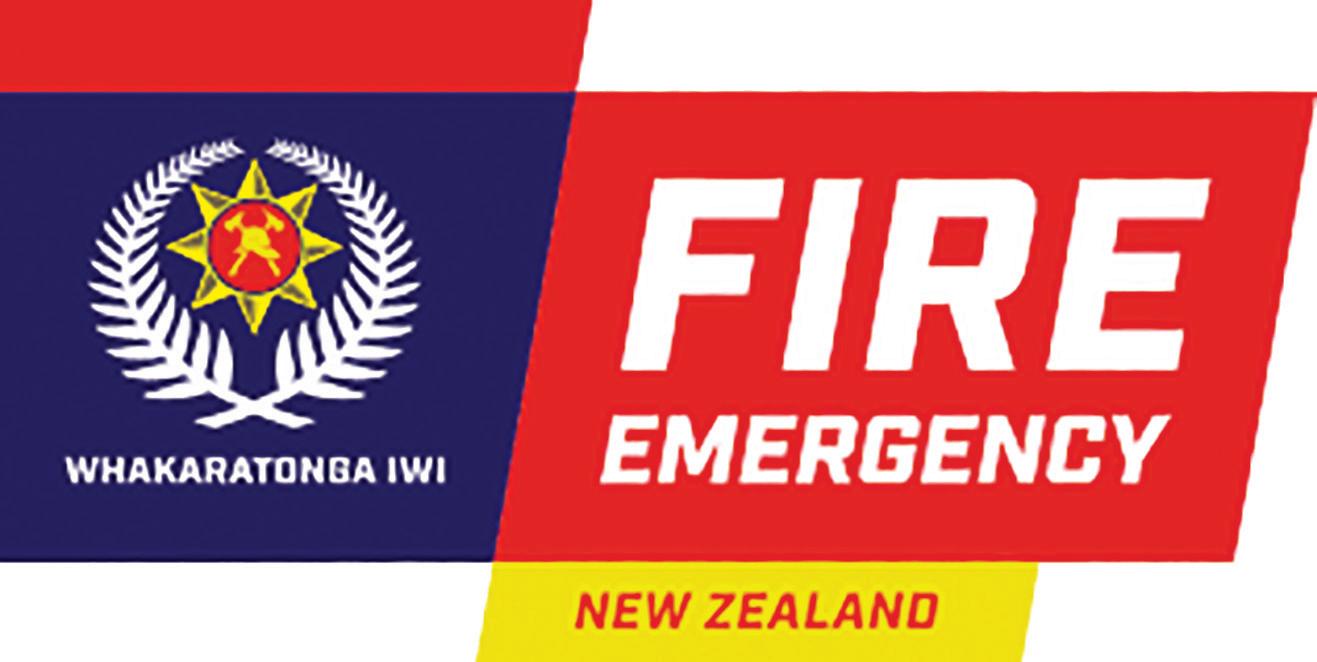
Teach your children to get out and stay out if there’s a fire. If they see a fire or hear a smoke alarm, tell them to:
• Get out of the house FAST (using your escape plan)
• Shout: “FIRE, FIRE, FIRE!” Go to the safe meeting place
Issue #5 - West Auckland | 11


plan ESCAPE
Remember...
Get Out! & Stay Out!
In a fire, you’ll probably be scared. Toxic smoke might make it hard to breathe and see clearly.
You will only have one or two minutes from the sounding of the smoke alarm to when your life is seriously threatened by fire or smoke. That’s why it’s essential to have an escape plan in place, to practice it regularly, and to know how to get to safety quickly.
Making an escape plan
Start by getting together everyone who lives in your house. Go outside and find a safe spot, away from the house, which can be your SAFE meeting place. This is where everyone will gather in the event of a fire. A landmark like a letterbox or special tree is best. Identify a primary escape route out of every room. Then pick a secondary route in case the first is blocked by fire.
Everyone who lives in the property needs to understand the Escape Plan and practise escaping from each room in the house by the two exits. Most fires start in kitchens (one in four), bedrooms (one in eight), and lounges and family rooms (one in six). Make sure your family practises escaping from these rooms every three – six months.


Check there is a safe way to reach the ground from upper floors.
If you have small children, sit down with a pen and paper and actually make a map of your home.
Have them draw escape plans from the bedroom and memorise the quickest way out of the house.









Remember,




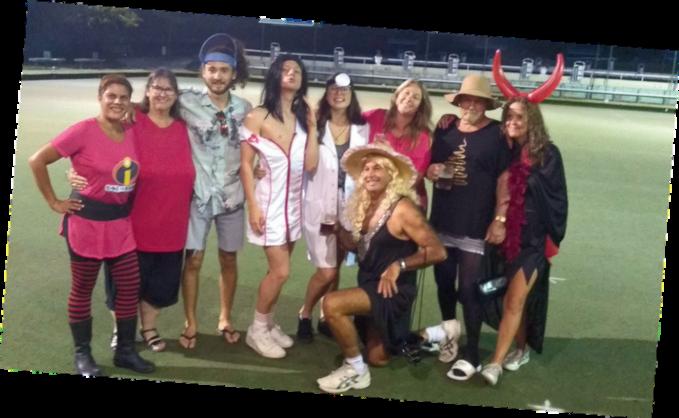
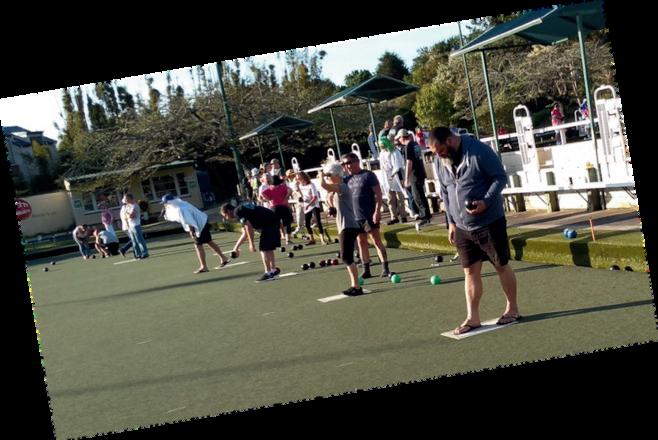


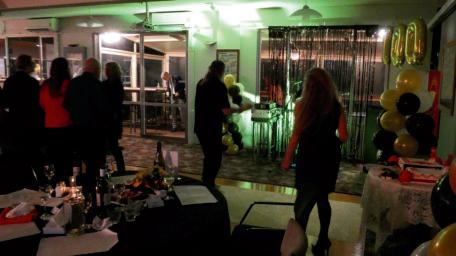




1. Have working smoke alarms. 2. Keep keys in deadlocks at all times when home.





Information provided courtesy of Fire and Emergency New Zealand 2017. www. fireandemergency.nz
you need to:
don’tforgetto buybatteries Rememberto testsmokeeachdetectors month! IMPORTANT !! Make a family escape plan
www.glenedenbowlingclub.org.nz 25a Glendale Road, Glen Eden / 027 418 1397 Well kept and comfortable clubrooms with air conditioning, Sky TV on two giant screens, a pool table, 3 dart boards, and a covered outdoor deck. Bar open every day from 2:30pm just 2 minutes walk from Glen Eden Township Where you, your family, and friends have a great time Roll up for a look round Ask us about hall hire
Stay dog safe
Dog
When walking to school, your child may come across a loose dog – here are some tips you can teach them to stay dog safe.
Safety


Quiet and slow – it’s the way to go!
If you are scared of a dog, move quietly and slowly away from it. Don’t run. It is better to walk away quietly and slowly. Don’t stare at the dog as you move away. If you stare, a dog might think you want to fight.
And remember, if you own a dog, make sure it is tied up or behind a fence in the morning and afternoon when children will be out walking to and from school.
If you see a dog roaming loose on the street, or encounter a dangerous dog, please report it as soon as possible to allow the animal control officers an opportunity to catch the dog while it is still roaming.


Do not run around or shout near a dog.

Dogs react to the way we behave. If you shout or run, a dog might chase or attack you.


Boutique Education For children aged zero to six INSPIRING CHILDREN
Proud to be in our community and supporting our local schools!

Issue #5 - West Auckland | 13
027
www.kingdomconstruction.co.nz
386 1146 • troy@kingdomconstruction.co.nz
THE BEST
CAN BE www.kumeumontessori.co.nz 09 412 9885 • 8 GRIVELLE STREET, KUMEU, WEST AUCKLAND •
TO BE
THEY
Bullying
Bullying behaviour
Bullying behaviour is complex. It can take many forms, including physical, verbal or social bullying.
It can take place in the physical or online world, and causes damage and harm. Verbal and social bullying can be as harmful as physical bullying.
What can I do if I see someone being bullied?
Someone who sees or knows that bullying is happening is a ‘bystander’.
Bystanders can encourage bullying by doing nothing.
What can I do if I’m being bullied?
Bullying feels awful and it’s important to remember it’s not your fault.
BULLYING BEHAVIOR
1. Physical, such as stand over behaviour, holding or hitting a person.
2. Verbal, such as threats, discriminatory remarks, name calling, emails, texts, anonymous comments or postings online.

3. Social, such as spreading rumours or personal information, excluding from groups or activities, posting negative material online, defacing a webpage or profile page.





14 | Issue #5 - West Auckland
We specialise in wall & floor tiling, waterproofing and silicone work with excellent quality. P: 021 751 124 | E: kelvin@kiingstiler.co.nz www.kiingstiler.co.nz Quality. Professional. Reliable Tiling To Perfection Since 2007 Mason Tech in full support of kid’s safety! Resin Surfaces High Friction and coloured surfacing to New Zealand’s Roading and transport industry 09 838 5952 info@resinsurfaces.co.nz Unit 8, 58 The Concourse, Henderson www.resinsurfaces.co.nz K ndly sponsored by KFG T l ng Ltd
Tell the person who is bullying you to stop!! (if you feel that you can). Or just walk away.
Tell someone you trust like a parent, teacher, family member or school counsellor. Keep telling adults until someone does something to stop it.

Help stop bullying by:
1. Stepping in if you feel you can safely – for example, saying “leave them alone – that’s mean”.
2. Talking about the bullying with another bystander so you have support.
3. Talking to the person being bullied – ask if they are ok or how you can help.
4. Telling an adult you trust about the bullying.
Spend time with friends who help you feel good about yourself. Don’t reply to any messages that make you feel sad, threatened or embarrassed. Often people who bully others are just looking for a reaction.
• Keep all messages and take photos of uncomfortable posts
• Make a note of the time, date and content. This is evidence you might need if the problem gets worse.
or queries@net- safe.org.nz
Does your company have any exciting projects or products you would like to feature in an upcoming edition of Safetywise?
PLEASE CONTACT OUR EDITORIAL/SALES TO DISCUSS: Email: safetywise@markat.co.nz




Issue #5 - West Auckland | 15
Unit 1, 12 Wookey Lane, Kumeu 0810 Phone: 09 412 7470 Email: info@everlight.co.nz www.everlight.co.nz New builds • Re-clads Renovations • Extensions Phone 020 413 68225 Email carl@harperhomesltd.co.nz www.harperhomesltd.co.nz E
Use privacy functions on Apps to block or prevent receiving nasty messages. Contact NetSafe if you’d like help on 0508 NETSAFE
Q
Online Safety for parents
Online safety for parents is more important than ever. As young people begin to spend more time online, it’s important that parents start to teach them how to stay safe!

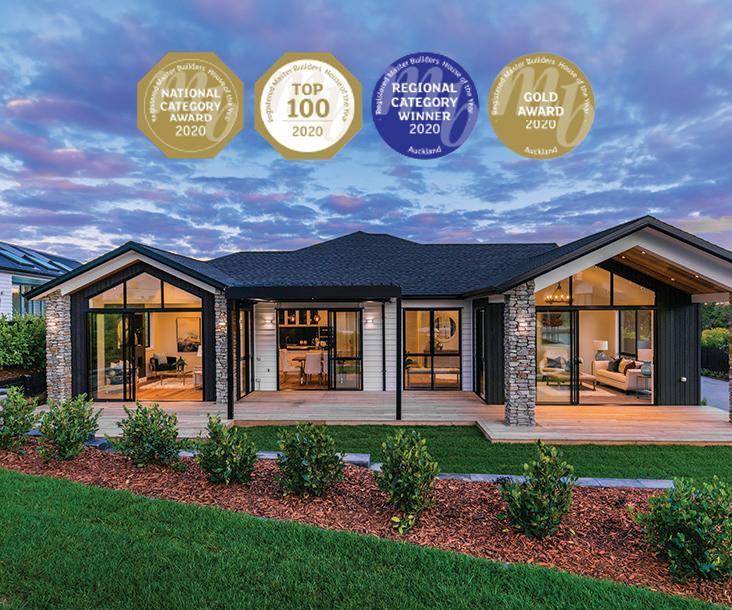

So, how do you get started? Check out our things to think about below.
1. Set expectations
Talk to your child about the type of behaviours you’d like them to adopt. For example, how long they should spend online, what apps and social media sites you’d like them to use and what is appropriate content to view.

This will be different depending on the age of your child, and what you feel comfortable with. Options like parental controls can help, but it needs to be teamed with online safety education.
2. Understand what they do online
Talk to your kids about what they’re using the internet for. What’s involved? Who’s in their network? What information do they share? Are they using the internet to learn to communicate and create friendships with others, or to create music or videos?
Showing an interest in the things they do helps to build your understanding of what their online world looks like, and creates an environment that makes it easier to have more difficult conversations about it the future.
For more parenting tips visit www.netsafe.org.nz. If you need help or advice, about any online issue you can contact Netsafe Call 0508 NETSAFE (0508 638 723) or email help@netsafe.org.nz






16 | Issue #5 - West Auckland
DISCOVER AWARD-WINNING LIVING WITH LEGENDARY HOMES Final few homes at Kumeu Pavilion, starting at $750k. Act Now – Limited Spots Remaining! 021 977 363 www.legendaryhomes.co.nz Happiness Can Be Built • Rubbish Removal • Water Blasting • Carpet Cleaning • Flood Clean Ups • Initial Cleans • Window Cleaning • Lawn Mowing • Property Repairs hawkeyecleaning@gmail.com JOHN HAWKE M: 021 804 922 3 3 3 3
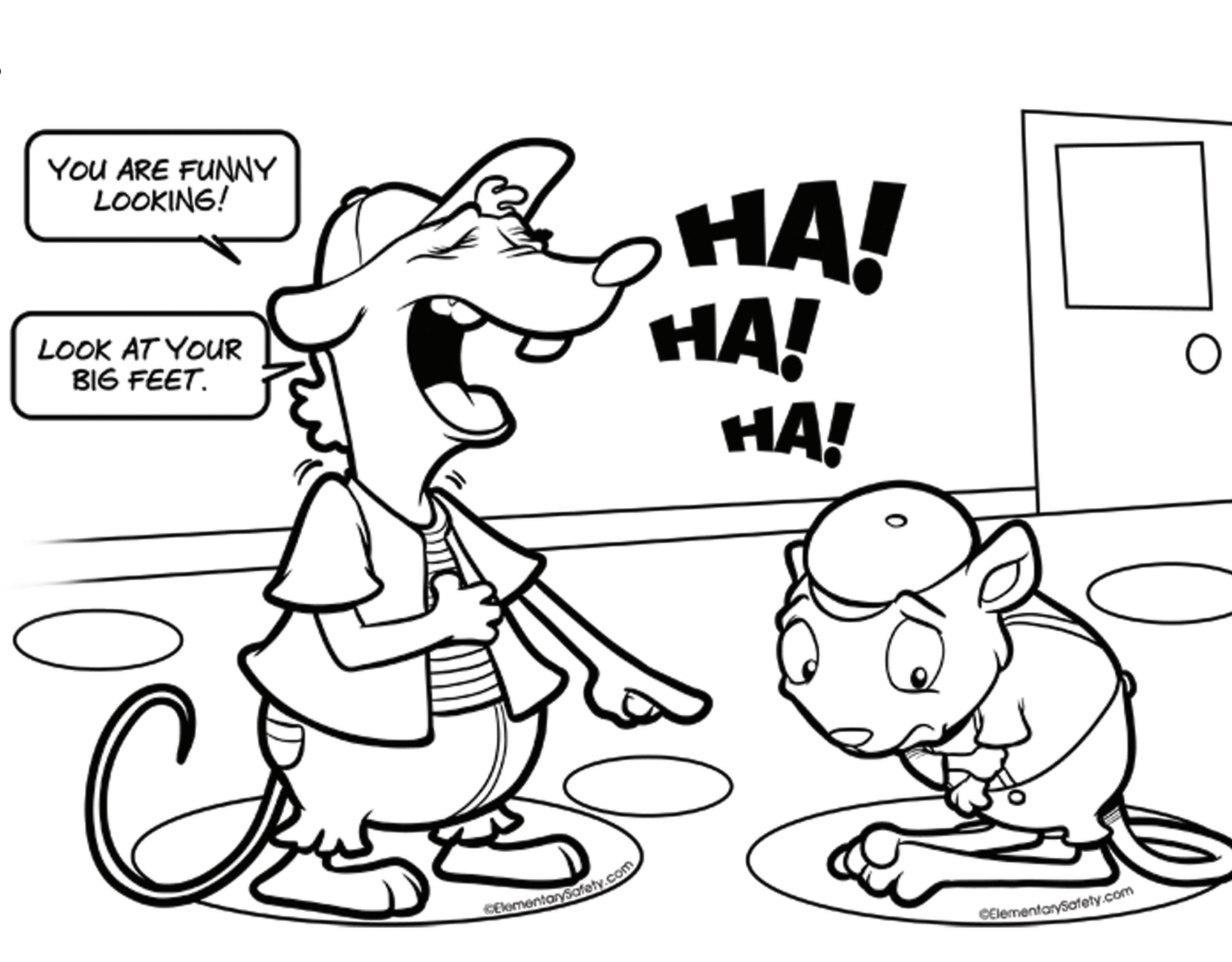
BE A BUDDY, NOT A BULLY
If you or someone else is being bullied, report it to a grown up. Find a way through the maze to safely find a growen ups help!
Issue #5 - West Auckland | 17
Page 17
START

THE POLICE ARE HERE TO HELP IN AN EMERGENCY Page #34 explains when/how and what to expect if you need to call 111 DONT FORGET TO PULL OUT THIS SECTION Page 18

SWIM SMART
Be careful in and near the water
:NAME ALWAYS WEAR A SAFETY HELMET Even
Page 19
if you are only going just a few blocks



FIRE SAFTEY
Remeber in a fire... GET OUT & STAY OUT
Can you find all the 20 hidden words in the wordfind below?
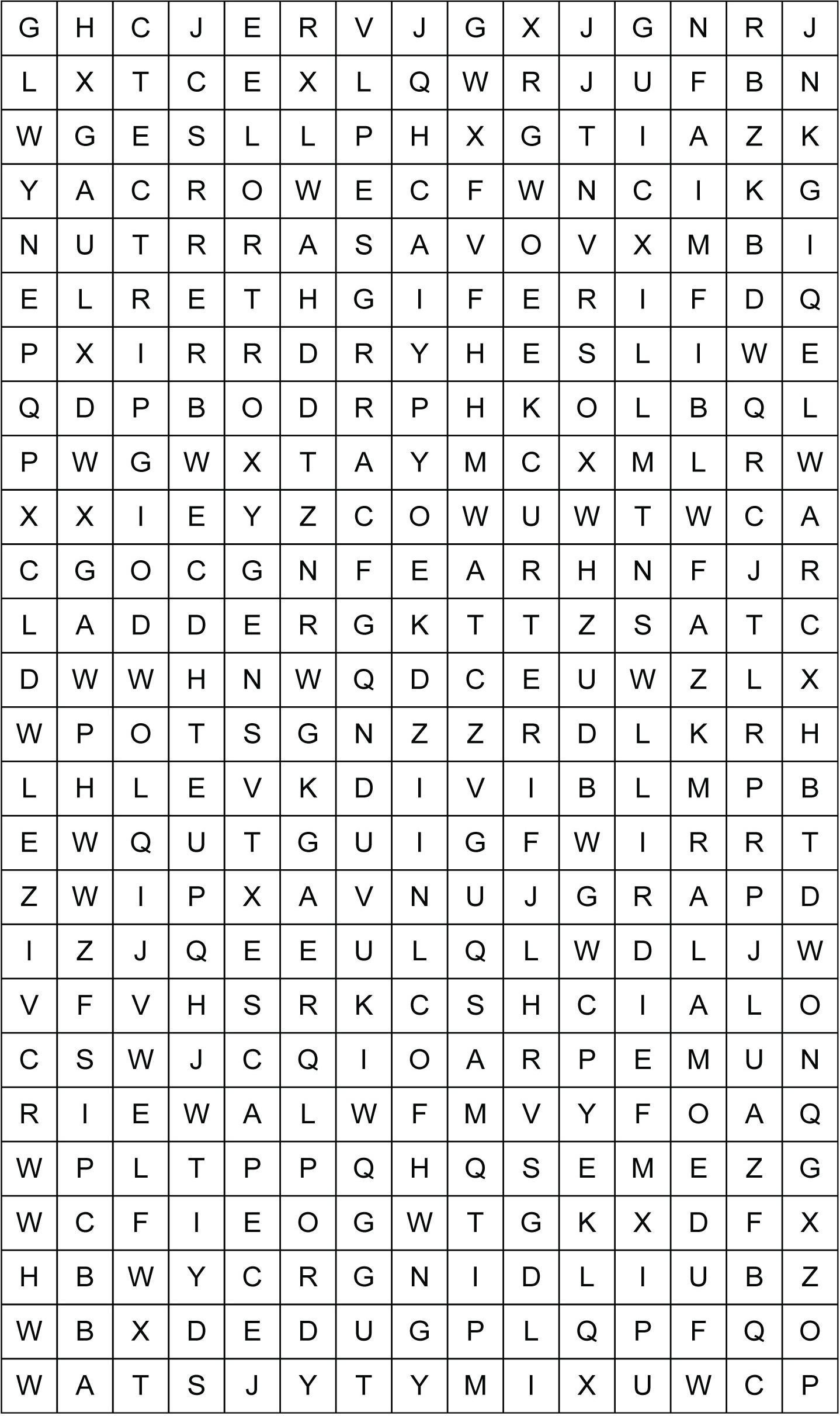
20 | Issue #5 - West Auckland Page 20
Do you knowYour Signs?
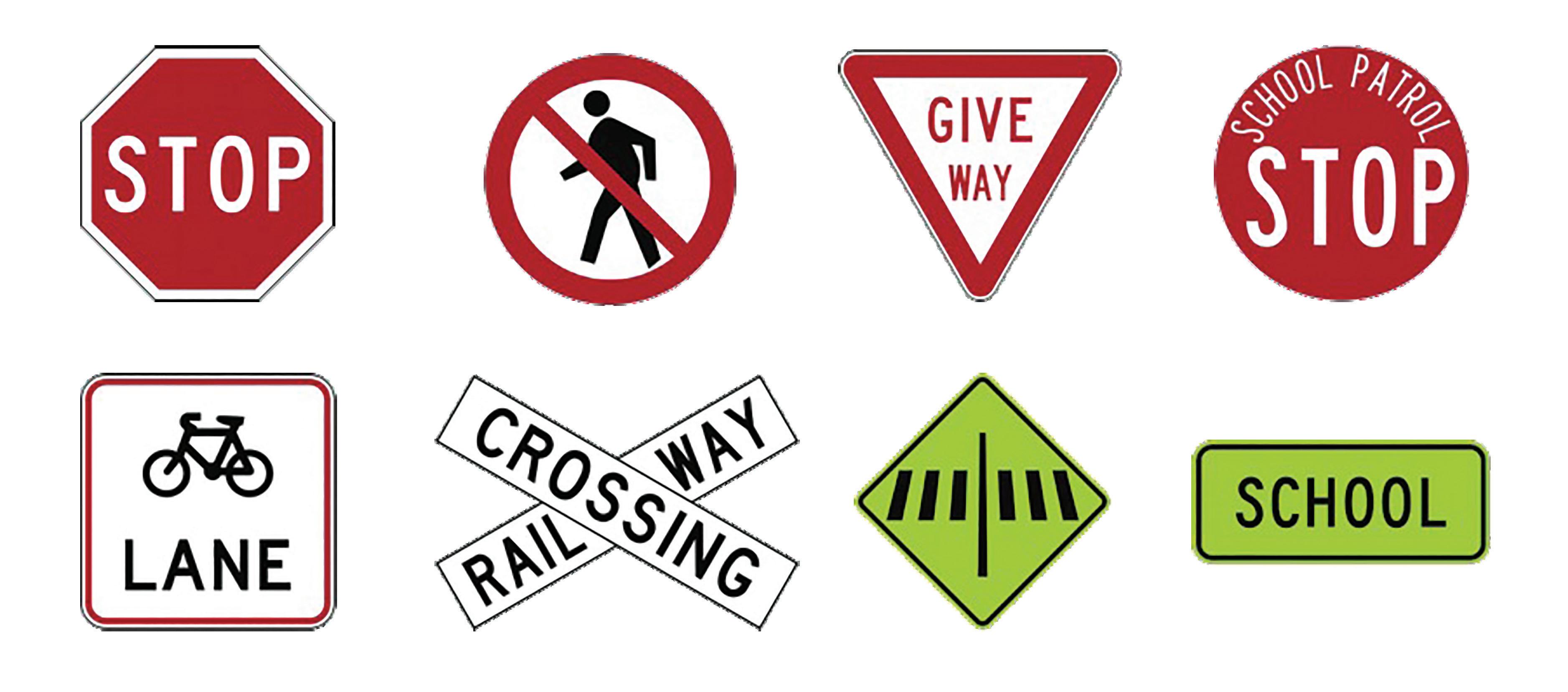
3. 4. 5. 6. 7. 8. 2. 1.

As a way to get around, walking is an easy, healthy and safe way to travel. There are a number of tips you can follow to keep it that way.
How to stay safe when walking
• Use pedestrian crossings or cross at traffic signals
• Stop and check at every driveway
• Walk on the footpath, close to the houses and away from the road
• Hold hands if walking with a young child near roads or in carparks.
Crossing the road
When there’s no pedestrian crossing
• Be patient and cross the road only when it’s safe to do so (it takes time for a vehicle to stop).
Then use the kerb drill:
1. Stop one step back from the kerb.
2. Look and listen for traffic coming from all directions.
3. If there is traffic coming, wait until it has passed and then look and listen for traffic again.
4. If there is no traffic coming, walk quickly straight across the road.
5. While crossing, look and listen for traffic, wherever it may come from.
When using a pedestrian crossing
• Use official crossings where possible – in fact, if you’re within 20 metres of a pedestrian crossing, the law requires you to use it
• Check that approaching vehicles have seen you and can stop before you step out
• Cross as quickly as you are able
• For crossings with signals, only cross when the green person or message shows.
Watch out for courtesy crossings
A courtesy crossing may be made of other materials like bricks or pavers.
Use these crossings with care because cars don’t have to stop for pedestrians at courtesy crossings.
Crossing at intersections
Choose a place where you can see, and be seen by, traffic from all directions.
Crossing between parked cars
Crossing between parked cars should be your last option. It is safer to walk a little further to get to a clear stretch of road.
If you do cross between parked cars:
• Stop on the footpath and look carefully for a gap between two parked vehicles which don’t show signs that they might move off (eg they don’t have drivers, exhaust fumes, engine noises, lights)
• If you can’t see inside either vehicle choose another gap
• Make sure you have a safe place to go on the other side of the road (eg a place that is not blocked by a driveway or parked vehicles)
• Walk to the outside (headlight) corner of the parked vehicle and stop where you can see the traffic, and drivers can see you before you cross.
Walking where there are no footpaths
• Walk facing the oncoming traffic
• Keep as far off the road as possible
• Walk in single file – if in a group, the shortest child should be at the front and tallest at the back so everyone can see.
Answers for: Do You Know Your Signs? 1. Compulsory stop sign 2. No pedestrians sign 3. Give way sign 4. School patrol stop sign 5. Bicycle lane sign 6. Railway crossing sign 7. Crosswalk ahead sign 8. School sign

Playground
safety tips

Actively supervise children on playgrounds and look for hazards, such as rusted or broken equipment and dangerous surfaces.
Teach children that pushing, shoving or crowding while on the playground can be dangerous. Ensure safe surfacing beneath and surrounding playground equipment
Dress appropriately for the playground. Remove necklaces, purses, scarves or clothing with drawstrings that can get caught on equipment and pose a strangulation hazard. Even helmets can be dangerous on a playground, so save those for bikes. Little kids can play differently than big kids. Ensure that children use age-appropriate playground equipment.
• Avoid playgrounds with non-impact absorbing surfaces, such as asphalt, concrete, grass, dirt or gravel
• Recommended surface materials include: sand, pea gravel, wood chips, mulch and shredded rubber. Rubber mats, synthetic turf and other artificial materials are also safe surfaces.
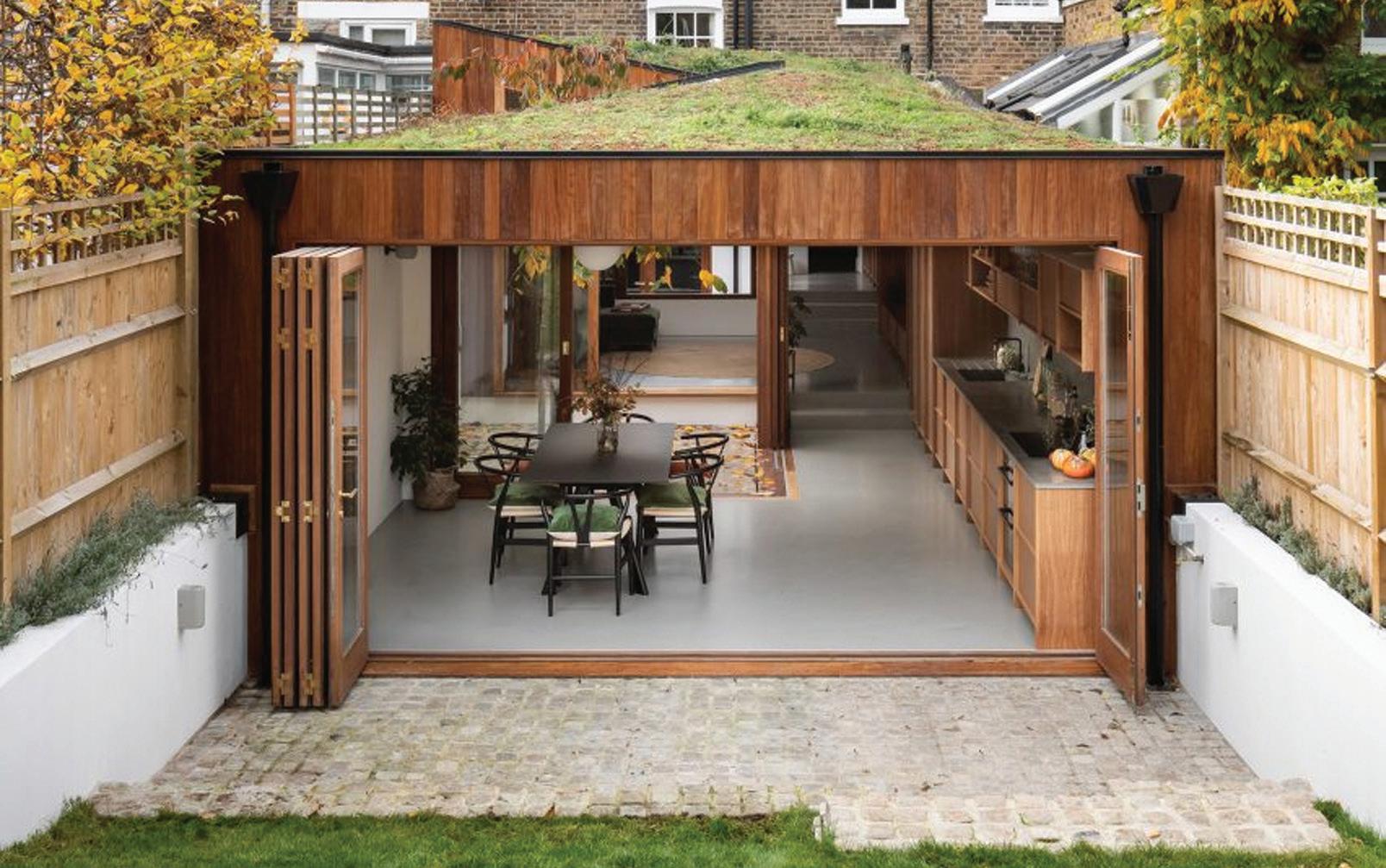

22 | Issue #5 - West Auckland
WWW.SHREEJIBUILDER.CO.NZ SERVICES WHY CHOOSE US? ● KITCHEN RENOVATION ● BATHROOM RENOVATION ● PERGOLA ● DECKS ● INSURANCE LEAKY BUILDING ● ROOFING SERVICE ● HOUSE EXTENSION ● FLOODING JOB Choose Shreeji Builder for exceptional renovations and building projects in Auckland. Our dedicated team delivers quality craftsmanship, timely results, and personalised solutions to make your dream home a reality. m +6421 135 7588 k Shreejibuilder@hotmail.com 9 55 Connaught Street Blockhouse Bay, Auckland
Falls

Falls Ruin The Fun
Keep an eye on your kids to help them play safe. While childhood fall related injuries are often viewed as ‘part’ of growing up, some falls can cause serious injury with great social and financial costs to children, their families and the government. In some cases falls are fatal.
Safety messages
For playgrounds and parks
• Check that the playground is age appropriate for your child
• Check for hazards (i.e. broken glass, rusted or broken equipment and inadequate soft surfacing). Report hazards to your local council
• Pushing, shoving or crowding while on playground equipment can be dangerous
• Wearing necklaces, purses, scarves or clothing with drawstrings that can be a strangulation hazard and should be avoided.
For trampolines
• One person at a time
• Always use safety padding on the frame and springs
• Always check that the trampoline is in good condition
• Always supervise children
• Make sure nothing is on, under or near the trampoline when it is in use
Child fall related injuries in New Zealand
• Over 10 children are hospitalised EVERY DAY
• Fall related injuries are the number one cause of hospitalisation
• ACC claims costs from child falls amount to $45 million per year on average.
• Children must climb on and off, rather than jumping on or off.
At home and at play
• Use stair and door gates/ guards
• Use safety latches on windows kids can’t reach
• Use helmets and other safety gear with wheeled toys like skateboards and skates
• Babies don’t need baby walkers
• Top bunk beds are for kids over nine years old
• Keep other furniture away from bunk beds.

Issue #5 - West Auckland | 23
Escape and unwind with our Welcome Package for only $109! This 45-minute treatment is pure bliss, featuring a skin consultation, illuminating mask, relaxing massage, and much more. 527 Blockhouse Bay Rd, Blockhouse Bay www.glowbar.co.nz 021 178 8750 BOOK TODAY! sales@italianstone.co.nz www.italianstone.co.nz 10 Portage Road, New Lynn 09 827 8633 Does your company have any exciting projects or products you would like to feature in an upcoming edition of Safetywise? PLEASE CONTACT OUR EDITORIAL/SALES TO DISCUSS: Email: safetywise@markat.co.nz

24 | Issue #5 - West Auckland

26 | Issue #5 - West Auckland COLOUR ME IN!
WATER SAF Every parent
Keeping Kids Safe
Life Jackets for Kids - Make Sure You Are Seen
When learning to swim kids need constant supervision around water. Whether the water is in a bathtub, a wading pool, an ornamental fish pond, a swimming pool, a spa, the beach, or a lake.
Young children are especially at risk — they can drown in less than two inches (six centimeters) of water. That means drowning can happen where you’d least expect it — the sink, the toilet bowl, fountains, buckets, inflatable pools, or small bodies of standing water around your home, such as ditches filled with rainwater. Always watch children closely when they’re in or near any water.
If you’re not a swimmer yourself, it’s a good idea to take lessons and learn how to swim, and kids over four years old should learn to (check the local recreation center for classes taught by qualified instructors). Kids who are younger (but older than age one) also might benefit from swimming lessons, but check with your doctor first.
Life Jackets for Kids
How much value do you put on your kids’ lives
When it comes to messing about in boats, there is always a danger of getting into serious trouble. Make sure your child has a life jacket, as it could just about be the best present they get this summer.
In choosing any life jacket there should be enough buoyancy to float your child with their head and shoulders out of the water. It must not have a tendency to turn and hold your child in a face - down position. Because children vary in their shape, they can be thin, short or tall and yet still weigh the same, it is vital to spend time trying on different brands and types. The garment must suit the activity the child will be doing and, above all, it must be comfortable.
There are several key points when purchasing a life jacket for a child.
It must be a good fit and be the correct size for their body weight. It is critical when buying a life jacket, be it a full life jacket, buoyancy vest or inflatable jacket, that you never buy one that your child will grow into.
It must fit NOW!
When Kayaking - It is essential to have buoyancy bags or blocks fitted to make sure your kayak stays level so it can be re-boarded.
• Always wear a buoyancy-vest or life jacket designed for kayaking; make sure you do not become separated from your kayak following a capsize.
Information provided courtesy of Water Safety New Zealand. www.watersafety.org.nz

28 | Issue #5 - West Auckland
Every parent
should know!
ETY TIPS should know!
Make Sure You Are Seen
Get the right life jackets
Fastenings should be durable, with zips made of plastic and not metal. Colour choice is also something to consider as bright contrasting colours aid location during a rescue. The most effective colours are RED, ORANGE and YELLOW.
Comfort is an important consideration, because if the jacket isn’t comfortable the child will not want to wear it. If it fits snugly, then you might find yourself reminding your child to take it off as they walk away up the beach from the boat. It should also be easy to get on and off and allow freedom of movement both in and out of the water.
Choosing the right life jacket for your child is important!
Kayaks
These fun boats are common in lakes, rivers, beach and around the coast. Used properly, they are very safe, but their limitations need to be understood. When kayaking in areas used by other craft, make sure you will be seen.
A kayak can be almost invisible to skippers of other craft. Wearing bright clothing, having brightly coloured paddle blades with reflector strips, and displaying a very bright orange or red flag about a metre above the water on a rod will greatly reduce the chance of being run down accidentally.
Only experienced, fit paddlers should use a kayak in rough water, as kayaks can easily capsize.
At the beach
Understanding the ocean is very important.
The more you know about how waves, wind and tides affect conditions in the water, the better able you are to keep yourself safe, or others, from danger.
Swim between the flags
Surf Life Saving New Zealand patrol over 80 of our busiest beaches each summer. Always swim between the red and yellow patrol flags, as they identify the safest area to swim when an active lifesaving patrol is on the beach.
Rip currents
A rip is a strong current of water running out to sea. They can be very dangerous to swimmers as they can sweep you out to sea quickly and easily.
Rip currents can be hard to identify, look for these features:
• Discoloured or murky brown water caused by sand stirred up off the bottom
• A smoother surface with much smaller waves, with waves breaking on either side
• Debris floating out to sea
• A rippled look, when the water around is generally calm.
If you get caught in a rip:
• Don’t panic
• Don’t try to swim against the rip back to shore
• Let the rip carry you out until the current subsides
• Then swim parallel to the beach for 30-40 metres before swimming back to shore
• If you get tired or become frightened, stay calm, raise your arm, call for help and wait for assistance.
Issue #5 - West Auckland | 29

30 | Issue #5 - West Auckland
Public Transport Rail Safety
Rail safety tips
Stay away from overhead wires carrying electrical energy. The electrical energy that moves trains is always dangerous and always on. You cannot hear, see or smell electrical energy.
The electrical energy is 100 times more powerful than the electrical energy used at home. The electrical energy can jump gaps of up to three metres. When electrical energy passes through people, it seriously injures them or worse.
Always
use level crossings
to get across the tracks
Trains on the tracks are very big, very fast and very quiet. Trains take a long time to stop. It is dangerous to take shortcuts and trespass.
Watch out for the second train
Obey all warning signs and signals. Wait until all warning signs have stopped before crossing – there may be a second train. Look and listen in both directions.
Platforms and stations
Not all trains stop at ALL stations. Some express trains and freight trains may travel through at high speed without stopping. Always expect a train on a platform and stand at least 1.5 metres away from the platforms edge.
Fast trains can create a vacuum called a ‘back draft’ that can blow you over or suck you under a train. Under no circumstances should you ever sit on the edge of a platform.

Information provided courtesy of the NZ Transport Agency: www.nzta.govt.nz
Platform safety
Train stations and platforms can pose safety risks if you do not follow some simple safety guidelines.
• Always stand well behind the yellow line on the platform and do not walk over the line until the train has come to a complete stop
• Be careful of the gap between the platform and the train – and take particular care to step well clear of the gap as you board the train
• All platforms are different and the size of the gap may vary from station to station
• Let passengers who are disembarking clear the area completely before boarding the train.
Anything with wheels has the potential to be dangerous on a train platform:
• Never use skateboards, scooters or bikes on a train platform, and always turn wheels so they are at right angles to the tracks
• Always walk and don’t run on a train platform to avoid tripping and potentially falling onto the tracks.

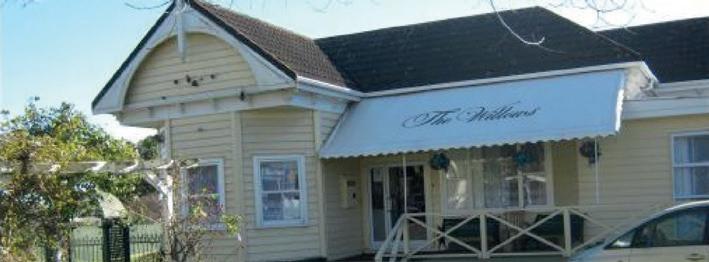


Issue #5 - West Auckland | 31
Providing a ‘home away from home’ for people who are unable to look after themselves. Contact Us! (09) 270 3516 16 Princes Street, Otahuhu House & Land packages available Lloyd Hallett 021 175 1670 lloyd@latitudehomes.co.nz latitudehomes.co.nz 0800 776 777 Does your company have any exciting projects or products you would like to feature in an upcoming edition of Safetywise? PLEASE CONTACT OUR EDITORIAL/SALES TO DISCUSS: Email: safetywise@markat.co.nz
Public Transport
Bus Safety
School bus safety tips
The school bus is one of the safest ways to travel. Follow these steps when you're picking up or dropping off your children at the bus stop and teach them about staying safe.
If you pick up or drop off your children at the bus stop
1. Wait on the same side of the road as the bus stop
2. Park your car well away from the bus stop or other children
3. Teach your children about safe bus behaviour – and practice it with them
4. Encourage your children to wait quietly at the stop and to keep away from the road.
If your children make their own way to or from the bus stop
1. Teach your child the safest route from their house to the bus stop – the route with the fewest road crossings and least traffic
2. If they have to cross the road after getting off the bus, teach them to wait until the bus has moved away and they can see up and down the road clearly
3. Dress them in brightly coloured or reflectorised clothing that can be easily seen by drivers.
When waiting for the bus
1. Wait at the nominated bus stop area
2. Keep well away from the road edge
3. Wait quietly, avoid playing games where you might end up running onto the road.
Getting on the bus
1. Form a single line
2. Make sure the bus has stopped before you try to get on
3. Don't push. Be patient and let those in front of you get on without any shoving or pushing
4. Carry your backpack or school bag – it may get caught in the door if you wear it.
Riding on the Bus
1. Quickly choose your seat and sit down
2. Put your bag on your lap or under your seat – keep the bus aisle clear
3. Stay in your seat until the bus has stopped.
4. If you have to stand, put your bag on the floor and hold onto a seat back or handrail.
Getting off the bus
1. Get off the bus carefully, without pushing
2. After you get off the bus, wait as far away from the edge of the road as you can, until the bus has moved away
3. If you need to cross the road, wait until the bus has driven past and you can see clearly up and down the road before crossing
4. Stand well clear of the bus if it is turning or reversing.



A walking school bus is just like a school bus, except children walk to and from primary school under the supervision of adult volunteers (often parents), who act as the walking school bus driver.
Children are dropped off at the school gate, and along the way they learn how to safely negotiate the road, as well as socialise with friends and neighbours, improve fitness and arrive energised at school ready to learn. Routes vary in length; they are usually about 1.5 km – or a 30-minute walk - but they can be longer or shorter.
Start times and locations depend on the length of your route, and school start and finish times.
A walking school bus can operate all five days of the school week, or as little as one day per week.
It can operate in the morning, after school, or both. It all depends on the availability of adult volunteers and what works best for your team of bus drivers. Information provided



32 | Issue #5 - West Auckland
NZ Transport
is a walking
• Residential • Commercial • Electronic Locks • Aluminium Door & Window Servicing 09 832 7602 0800 11 22 52 info@westernlock.co.nz www.westernlock.co.nz RECEIVE A 10% DISCOUNT WHEN THIS AD IS MENTIONED TONY MATICH MOTORS 2011 LTD AUTO ELECTRICAL & ALL MECHANICAL LPG & CNG INSTALLATIONS & SERVICE W.O.F. ISSUED Phone: 09 828 0257 Email: matich-motors@hotmail.com Let Us Help You Build Your Dream Home Phone: 021 0241 6567 Email: admin@villaworxconstruction.co.nz www.villaworxconstruction.co.nz
courtesy of the
Agency: www.nzta.govt.nz What
school bus?

















Keep kids off quad bikes
Quad bike injuries are one of the main issues faced by rural kids. Quad bikes of all sizes are powerful and heavy machines with a high centre of gravity. Children do not have the body size, weight, perception and co-ordination skills to actively ride these large machines.















Below are recommendations to safeguard the transport of rural children:
That legislation is developed to prohibit children under the age of 16 years from operating an adultsized quad bike (engine capacity > 90cc).
That children are prohibited from being passengers on all quad bikes which have been designed for one person only
Child quad bike injuries in NZ – the numbers:
• 30 children are fatally injured or hospitalised with serious injuries every year
• In more than half of quad bike injury cases, a child was the driver
• Manufacturer recommendations prohibit the use of adult-size quad bikes for under 16 year olds.


Issue #5 - West Auckland | 33
When to call
We call 111 only for emergencies, but what is an emergency?
Sometimes it’s hard to know, especially when everything is happening at once.
The best thing we can do before an emergency happens is prepare. Some ways we can prepare is learning what an emergency is and learning how to call 111.
What is an emergency?
An emergency is when something serious and unexpected, that could be dangerous, is happening and needs to be taken care of right now.
Some examples of emergencies include:
• Uncontrolled fires • An accident
• Someone who can’t breathe or finds it really hard to breathe.
These aren’t the only emergencies we call 111 for. Can you and an adult come up with other emergencies you would call 111 for?
Calling 111
When an emergency happens, the best thing we can do is tell an adult right away. When we tell an adult, they’ll be able to tell us if what we’re telling them is an emergency. If it is, they can call 111 and anyone else who might need to know what’s happening.
When this happens, we need to stay calm, do what the adult tells us to do and let the adult make any necessary calls. Most of the time an adult will pick up a phone to call 111.
However, very rarely, you might have to make the call. When we call 111, the operator, or the person on the other side of the phone, will ask what sort of services you require or whether you need an ambulance, Police or Fire services.
If you don’t know, that’s okay.
The operator will ask you questions to figure it out. Just remember to stay calm, do your best to answer the operator’s questions and if you can, do everything the operator says.
Fun 111 activity
To practise, pretend you’re making a 111 call with an adult/teacher You pretend to be the caller and the adult/teacher will be the operator. Both of you will need to make a phone shape with one of your hands.
Using your ‘phone’ dial 111
According to New Zealand Police, when the operator picks up, they will ask questions like these:
Where are you?
When did the event happen? What is happening now?
The great thing about this game is that you can take it wherever you go. Playing in different settings will help you practice sharing your location. Wherever you are, be sure not to hang up before the operator tells you to!





34 | Issue #5 - West Auckland
WESTGATE & HENDERSON “WHERE EXCELLENCE IS HABIT” Sub Divisions Civil Works Property Maintenance Retaining Wall All drainage works: Commercial & Residential Ph. 022 092 0781 aj.civildrain@yahoo.com aj.civil.co.nz 17 Swinburne Street, Blockhouse Bay www.camptonconsulting.co.nz M. 021 024 84721 E. dianne@camptonconsulting.co.nz Health ♥ Safety♥ Well-being Does your company have any exciting projects or products you would like to feature in an upcoming edition of Safetywise? PLEASE CONTACT OUR EDITORIAL/SALES TO DISCUSS: Email: safetywise@markat.co.nz
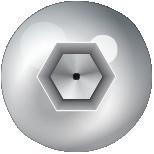


Aub Hart
Director Ph 0274 778 445
• Phone 07 859 1118
• aub@stainlesselectrical.co.nz
• Website www.sep.co.nz
• 75 Ingram Road, Rukuhia
Hamilton, New Zealand 3282
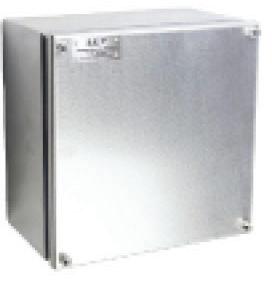
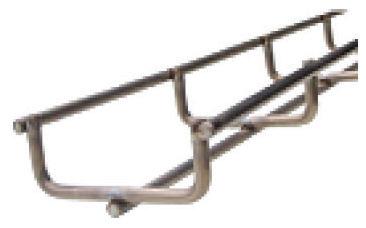
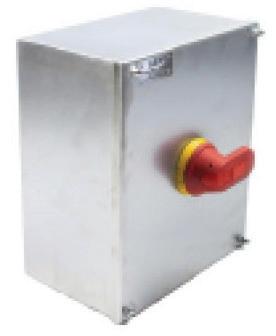
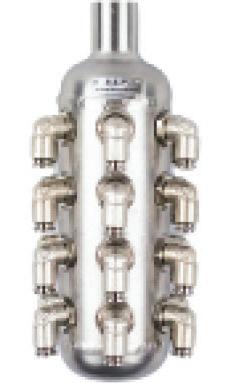

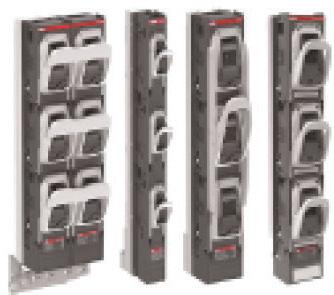

SEP design and fabricate products for industry specializing in the Dairy and Food sector ”
“
Enclosures Cable Tray Insulator Enclosures Manifolds Powder Coated Cabinets ABB Switchgear
When you decide to have us repair or service your transmission, or gearbox, we take the responsibility seriously. We know that the cost can be significant and that your vehicle is important to you. At The Gearbox Factory one of our dedicated sales consultants will be assigned to look after your vehicle from start to finish. They will ensure that work progresses without unnecessary delays and costs. They know it can be a stressful time and will do their utmost to get your vehicle back to you as quickly as possible.
Due to the complexity and technical aspects of modern transmissions our technicians are trained internally and internationally. Because of our size we also have various specialists in house, with the resources and knowledge to do the job on any vehicle. Our people - your advantage!
• Manuals
• Differentials

• Clutches
• Transfer Cases
• Automatics
• Torque Converters
• CVTs
• DSGs







































































































































































































